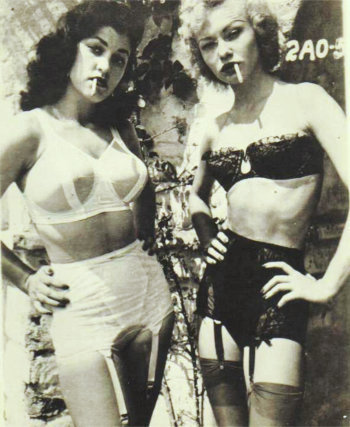Dialogue
Dialogue is the very essence and soul of writing whether it be in your novel, screenplay, stage play or short story. Basically you might say dialogue is conversation between people and most of the time it is used to solve a mutual problem. In real life you have both dialogue and talk. They are not the same. Dialogue is where information is passed between people. Talk is where you ramble on and mostly say anything that pops into your head.
Talk is forbidden in the world of professional writing. Even dialogue is different in real life and professional writing. In real life, for example, dialogue can contain a lot of uhs, aws, “likes” and clearing of the throat—all done in order to give you a moment to think of what you’re going to say next. In professional dialogue, uhs, aws and “like” are included only if the author puts them there for a purpose. In ordinary and daily conversation, just listen to how many people use the word “like” dozens and dozens of times. This word adds nothing nor does it reveal anything to real-life conversation. The word is just hanging there taking up space and time.
Good professional dialogue is memorable if it creates an eye picture in the mind of the listener. Then it’s like a song you can’t get out of your head. Bad dialogue is like a very powerful and effective sleeping pill in that it adds little or no forward movement to your plot.
If you hope to make it anywhere with your writing, you must be not only a good listener but also a good speaker. A good listener can quote what they’ve heard said long after the actual discourse has taken place. They can then incorporate it into their story telling. A good speaker knows how to articulate good dialogue.
Think of the last party or dinner you attended. It consisted of three types of people: spark plugs, sleeping pill people, or diarrhea mouths. Spark plugs are busy telling interesting stories that have a beginning, a middle and an end. Sleeping pill people either make one or two line comments or simply sit and listen with a grin on their faces. DMs can talk non-stop without saying much of anything. You’ll recognize them because they are “talking” which means they don’t have a beginning, middle or end to what they are saying. They are like a joke without a punch line. You usually excuse yourself and go refill your wine glass. Which of the three do you think could write an interesting book, screenplay, stage play or short story?
Dialogue in writing is not actual speech as though you were using a tape recorder. Good professional dialogue has to say a lot in the least number of words possible. So don’t think you can copy people’s words from a recording. What you use must give the voice of the person talking but it must move the plot forward. That means it has to be full of facts, important poop or a revelation of some kind that extends character or plot—or better yet, both.
Remember, dialogue works best when it’s short and straight to the point. Making dialogue conversational. believable and relevant can be difficult. One other small point. Characters shouldn’t constantly use the name of the person with whom they’re in conversation. Once or twice during a chat is quite adequate.
You never telegraph what is going to happen via your dialogue. Forbidden is to have someone use the phrase “going to.” You simply let things happen. Be sure to eliminate small talk unless it is part of the plot or for a very special reason. At parties or dinners you attend, “small talk” is where people speak and essentially are not saying anything or moving the plot of life along one iota. Living is in a standstill mode. That is not how soul mates meet at parties or dinners.
Conflict should be an integral part of scenes with professional dialogue because it is synonymous with plot. Without conflict, you’re just sitting there like a bump on a pickle. There has to be a push and pull—something that each character desires from the dialogue.
Advice on Writing Dialogue: First of all, determine if you are a spark plug, a sleeping pill or a diarrhea mouth. Maybe you don’t know. In that case, you’re going to have to ask someone. If you are a sparkplug, the only thing you have to work on is to make sure you add a lot of facts to what you have to say. Then study the paragraph below labeled Cadence and Beat.
If you are a sleeping pill, you’re going to have to make yourself become a storyteller at parties and dinners—or at least tell jokes. At any rate, anything you say must have a beginning, a middle and an end. Once you’ve awaken yourself enough to talk animatedly and tell a few jokes, you will be ready for the C & B paragraph below.
If you are a DM, you’ve got to shut up, stop clearing your throat so much, cut out the aws, uhs and interjecting the word “like “every other word. Practice at home telling an experience of yours and keep it down to fifty words. Make very sure you have none of that nothing word “like” and those guttural sounds you’re so fond of making. Once you see that people actually remain awake while you’re talking and don’t leave to go get another drink, you’re on your way to being able to check out the C & B paragraph below. Please make sure that you don’t laugh at your own jokes though or you’ll have to start your training program all over again.

Cinderella and Sheila from the film “A Piece of Cake.”
Cadence and Beat. First of all, a review of linguistics. All words of more than one syllable have a unit in which the voice rises. That is called a stressed syllable. If the voice does not rise, it is called an unstressed syllable. All one-syllable words are unstressed. Most poetry and songs have cadence and beat. This means you want to snap your fingers in rhythm. You do this because your words have poetical meter due to the way you are using those stressed and unstressed units. Rhythm is when you can rely on a group of unstressed syllables in tandem with a stressed syllable in a repeated pattern. This is called meter. Shakespeare mainly wrote his plays in a meter called Iambic Pentameter. This means there are five beats to the foot. You measure a sentence by the number of feet it contains. These feet are the rhythm of your song, poem or spoken dialogue. Thus you have a beat and this gives your writing cadence. A funny thing about humans. We like beat and cadence not only in songs and poems but also in dialogue.
So, when you’ve written your dialogue, check it out for beat and cadence. Your meter doesn’t have to be perfect all the time. I personally write mainly with one stressed syllable every three to five units. That’s my meter. I’ve gotten into the habit of it so I don’t have to stay conscious all the time of what I’m doing.
BOTTOM LINE: Just make sure you have many, many more one-syllable words than you do two or more syllable words. You though should read your dialogue out loud and test it out for beat and cadence. You’ll know if your dialogue has rhythm just by listening to yourself read it orally. Southerners in the USA seem to have a natural proclivity for this and that’s one of the reasons why they’re so good at story telling—and why we have so many writers from the south.
Here is some dialogue from a screenplay of mine entitled A PIECE OF CAKE. The scene is a cheap porno shoot and the dialogue is between an experienced actress and a novice.
SHEILA: I’m so pleased to be working in a film with you, Cinderella.
CINDERELLA: Is that right?
SHEILA: Yes, I’ve seen all your films. I especially liked “Grope Therapy.”
CINDERELLA: So did the D. A. In fact, he told the judge there wasn’t a dry fly in the house.
SHEILA: I just can’t believe I’m going to be in a movie.
CINDERELLA: Neither can I.
So, read your dialogue out loud. Check for beat and cadence. Edit it if you don’t feel like tapping your foot.
Remember, good professional dialogue accomplishes various important effects. It reveals personality and provides tension. Also you will get rid of monotony if you vary your beat and cadence from character to character.
Note: If you have good beat and cadence, you have memorable dialogue. Also, go out and listen to people. It’s quite an adventure.



